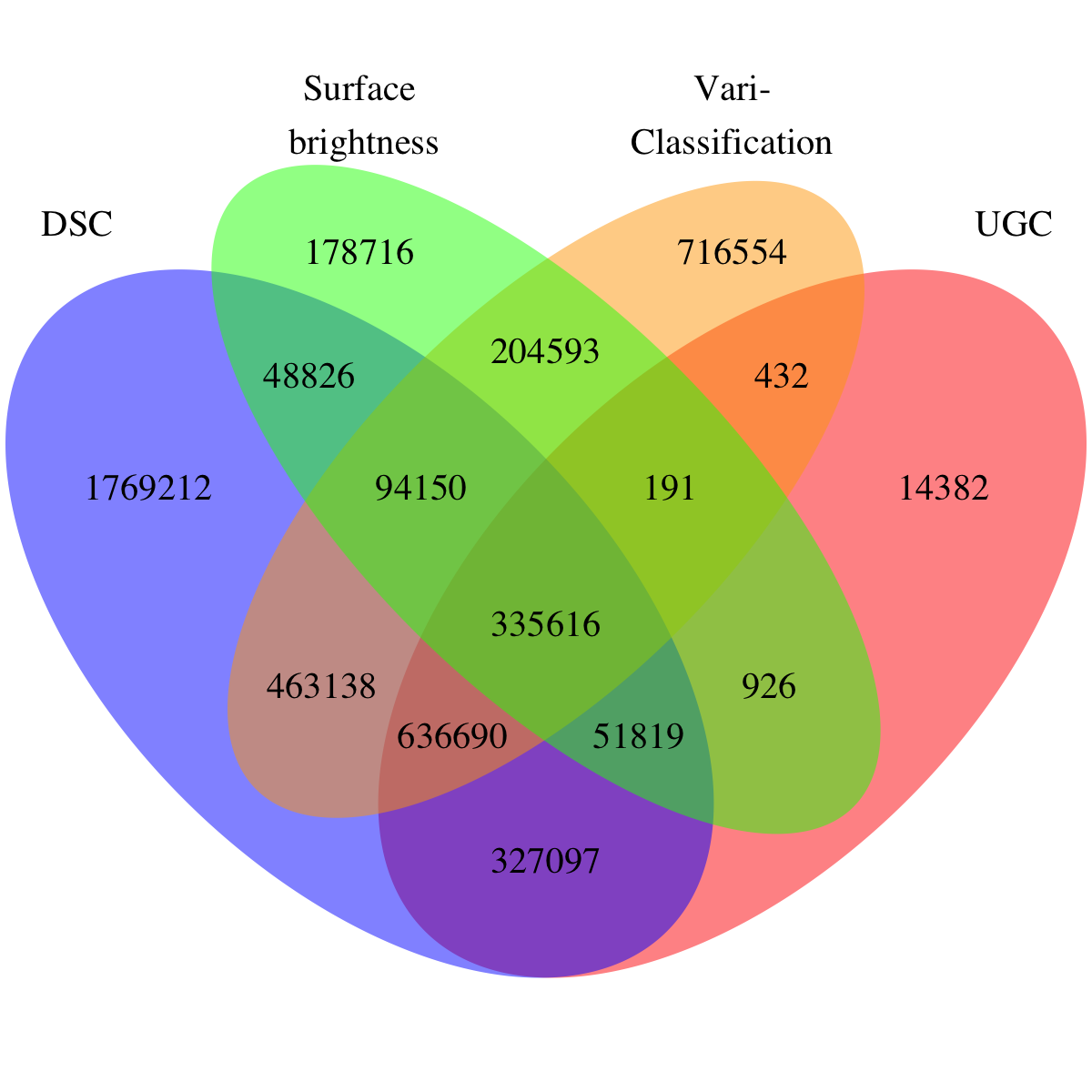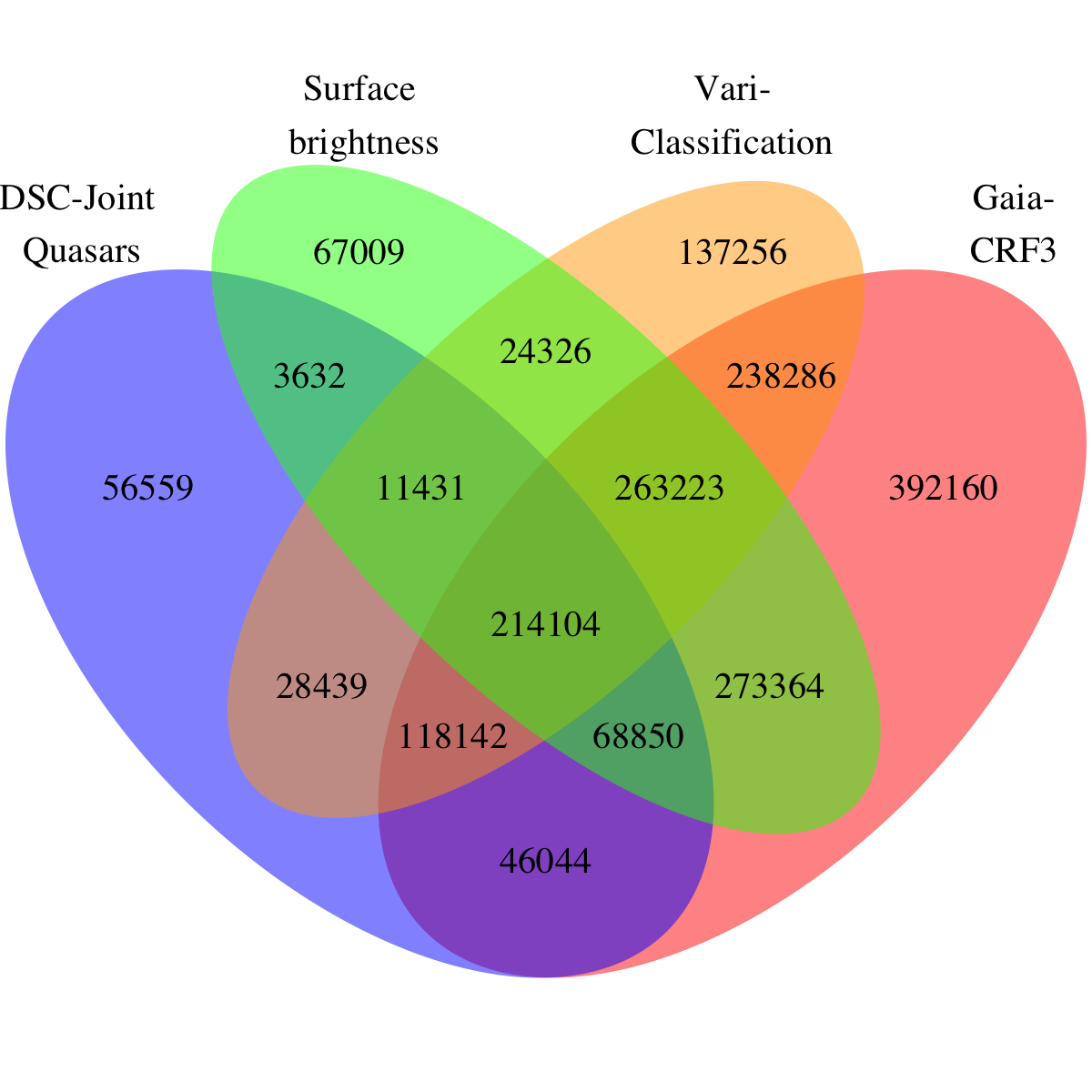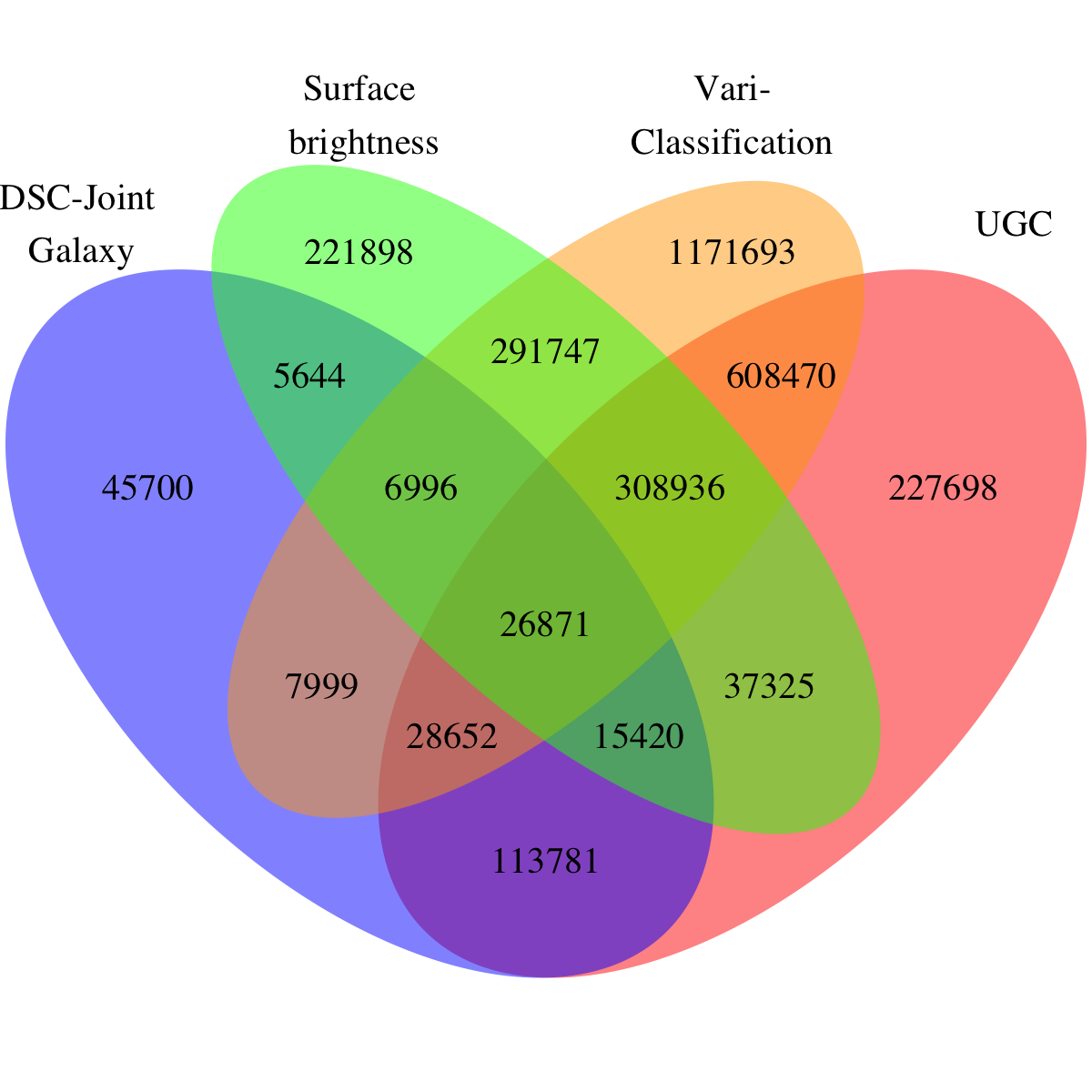12.3.1 Source overlap statistics
An overview of the source overlaps between modules is already given in Table 12.3 and Table 12.6. We show in Figure 12.1 and Figure 12.2 the quadruple Venn diagrams focussing on certain modules in order to highlight specific subsamples being used in the following sections. For both tables, complementary diagrams are shown in Figure 12.3 and Figure 12.4 whereby only the purest quasar classification from DSC is used.




In the qso_candidates table, it is interesting to note the following:
-
•
About 4 million sources do not overlap with the Gaia-CRF3 source list. The bulk of those stems from the DSC selection and they correspond to sources for which the selection criteria are more lax regarding the classification reliability. It is expected that many of those are genuine star, and this probably concerns most if not all sources at the bright end, where sources actually correspond to objects matched against e.g. Hipparcos or Tycho-2 (Figure 12.8)
-
•
Concerning the other modules, Vari-Classification introduces 201 452 sources classified as ‘AGN’ that do not overlap with Gaia-CRF3, while this number is 106 398 for the surface brightness analysis. For these latter, since the source selection was based on external catalogues, this corresponds to sources either chosen from different catalogue (in particular from an internal DPAC list of quasar candidates based on photometric lightcurves and produced at the time of DR2 but unpublished), or following quality criteria not as strict as those applied to build the Gaia-CRF3.
-
•
It is also interesting to look at those sources that stem exclusively from a given module:
-
–
For DSC, the large number of sources unique to this module (around 4 million) is due to the completeness-driven criterion used to select sources from this module. This number drops to about 56 thousand when limited to the DSC-Joint sources.
-
–
For the sources from the surface brightness analysis, about 53 thousand sources are exclusively featured from this module. About 2/3 stem from the aforementioned internal DPAC list of quasar candidates. The other third is found in the input list derived from the Half Million Quasars catalogue (Flesch 2015).
-
–
For sources from Vari-Classification, about 45 thousand are found only by this analysis.
-
–
Finally, there are about 179 thousand sources from the Gaia-CRF3 that were not found by any of the other modules contributing to the qso_candidates table. This number increases to 392 thousand when considering the purer DSC sample.
-
–
In the galaxy_candidates table, it is interesting to note the following:
-
•
For DSC, the large number of sources unique to this module (around 1.8 million) is again due to the completeness-driven criterion used to select sources from this module. This number drops to about 46 thousand when limited to the DSC-Joint sources.
-
•
For the sources from the surface brightness analysis, about 179 thousand sources are exclusively featured from this module.
-
•
For sources from Vari-Classification, about 717 thousand are found only by this analysis.
-
•
Finally, although not displayed in the figures, it is interesting to note that only about 45 thousand sources from the Gaia-CRF3 do overlap with sources from the galaxy_candidates table. Although the Gaia-CRF3 favours point-like quasars for a better astrometric precision, it can also contain other extra-galactic objects, among which galaxies. Further comments on sources overlapping between the respective qso_candidates and galaxy_candidates tables are given in Section 12.3.8.
The subsequent sections provide additional cuts through the above subsets in specific attributes from the gaia_source table.